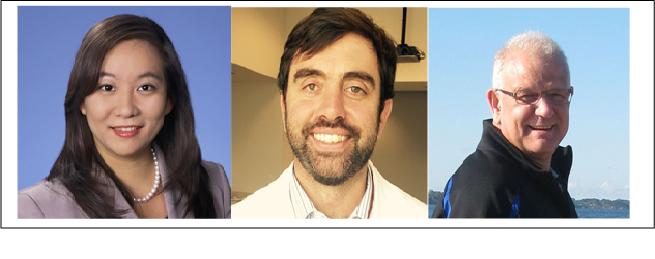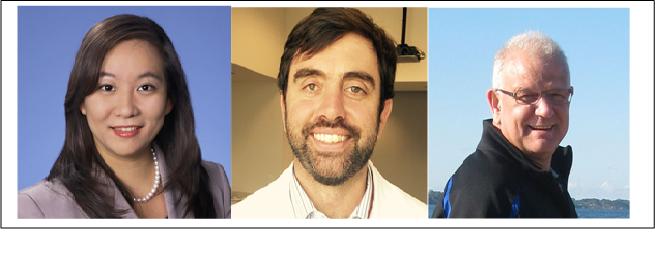
Credit: Baylor College of Medicine
An international team of scientists has identified variants of the gene EBF3 causing a developmental disorder with features in common with autism. Identification of these gene variants leads to a better understanding of these complex conditions and opens the possibility of diagnosing other previously undiagnosed patients with similar clinical disorders. The study appears in the American Journal of Human Genetics.
"We investigate the genetic causes of complex neurological conditions of various types, such as autism spectrum disorders and intellectual disability," said first author Dr. Hsiao-Tuan Chao, postdoctoral research fellow of pediatric-neurology at Baylor College of Medicine. "Such conditions are long-lasting, manifest very early in life and range from mild to severe. They can affect different neurological functions; however, sometimes they have overlapping similarities. For many of these conditions there is no definite diagnosis, treatments are limited and there is no cure." Chao and colleagues have taken a step toward better understanding some of these conditions. They discovered new mutations of the gene EBF3 in three patients presenting with a newly described syndrome. "The patients' main features include developmental delay, coordination problems, limited facial expressions at an early age and abnormal verbal communication and social behaviors. They can also present with repetitive motor movements, high threshold to pain and cognitive impairments," said Chao. "This newly described syndrome has many similarities with what we see in autism spectrum disorders, but also important differences."
The researchers used whole exome sequencing, a laboratory technique that allows the identification of all the genes in an individual's genome. In the patients, they identified two new variants of the gene EBF3 that were not present in the patients' parents. Mutations of EBF3 are rare in the general population but more common in a population of individuals with autism spectrum disorders and intellectual disability.
"The gene is known to be essential for normal development of the nervous system," said Chao. "It is one of the key factors involved in how neurons develop and connect with each other, but has not been studied in detail. In animal models, mutations that cause the gene to lose its function result in death of the embryo. EBF3 had never before been associated with a disease."
Models show gene EBF3 causes neurodevelopmental disorders
That the three patients with developmental disorders have mutations in the same gene is not sufficient proof that the mutations cause the condition. To determine whether the mutations can cause neurodevelopmental problems the scientists tested the effect of the mutations in the laboratory fruit fly, Drosophila melanogaster.
"We genetically engineered fruit flies to carry the mutations present in the patients," said Chao. "The defective gene product was not able to carry on the functions of the normal gene; the effect is so severe that the fly embryos do not survive. On the other hand, when we introduced the normal version of the human gene, the files developed normally."
Improved diagnosis
The identification of variants of EBF3 that can cause neurodevelopmental disorders has improved the genetic diagnosis of these conditions."We are able to provide a genetic diagnosis for patients who did not know the cause of their condition," said Chao. "This provides some relief to their parents and the possibility of reaching for support from a community of parents whose children are affected by similar disorders. In addition, by gaining a better understanding of how people are affected by EBF3 dysfunction, we as physicians are better equipped to prognosticate the developmental outcomes for these children." "Being able to see our research in fruit flies help us diagnose a patient in our own hospital was very gratifying. Knowing the genetic basis allows for more insights into this disorder of the brain," said Dr. Michael F. Wangler, assistant professor of molecular and human genetics at Baylor, a senior author on the paper.
###
Other contributors to this work include Mariska Davids, Elizabeth Burke, John G. Pappas Jill A. Rosenfeld, Alexandra McCarty, Taylor Davis, Lynne Wolfe, Camilo Toro, Cynthia Tifft, Fan Xia, Nicholas Stong, Travis K. Johnson, Coral G. Warr, Members of the UDN, Shinya Yamamoto, David Adams, Thomas C. Markello, William A. Gahl, Hugo J. Bellen and May Christine V. Malicdan.
The authors are affiliated with one or more of the following institutions: Baylor College of Medicine, Texas Children's Hospital, National Institutes of Health, National Human Genome Research Institute, New York University, Baylor Genetics Laboratories, Columbia University, the Howard Hughes Medical Institute and Monash University.
This work was supported in part by U54NS093793, R24OD022005, and R01GM067858, by the Intramural Research Program of the National Human Genome Research Institute and by the Common Fund, Office of the Director of the National Institutes of Health.
The Department of Molecular and Human Genetics at Baylor College of Medicine derives revenue from the clinical exome sequencing offered at Baylor Genetics.
Media Contact
Allison Huseman
[email protected]
713-798-4710
@bcmhouston
https://www.bcm.edu/news
############
Story Source: Materials provided by Scienmag





